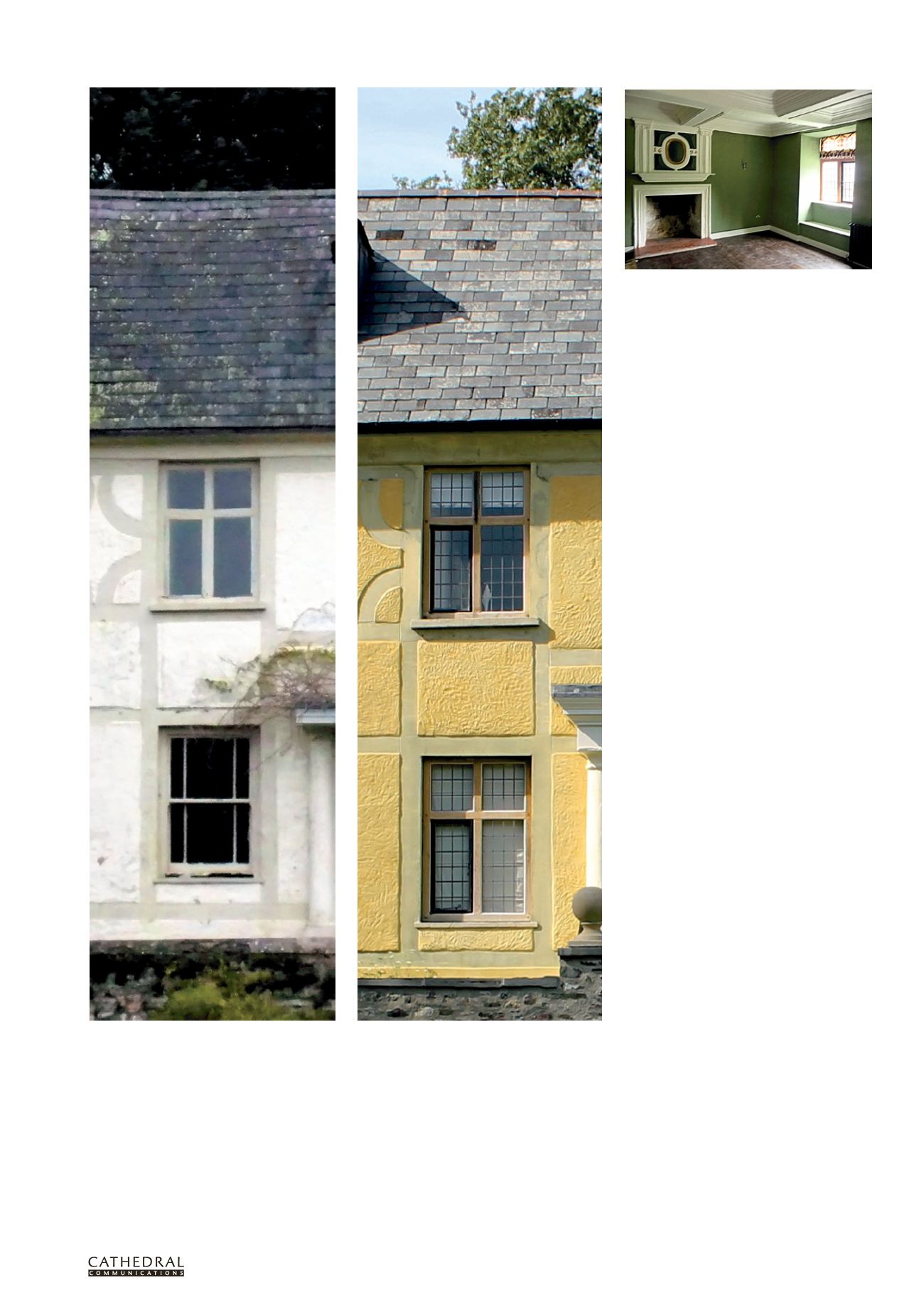
T W E N T Y F I R S T E D I T I O N
T H E B U I L D I N G C O N S E R VAT I O N D I R E C T O R Y 2 0 1 4
2 9
1
PROFESSIONAL SERVICES
building owner to repoint a wall without being
sure that the correct mortar was being used
would be a risk. If it was later found that the
wall had been repointed with cement and not
lime, for example, enforcement could result, an
action which all parties would wish to avoid.
Or perhaps the original lime mortar did not
really need to be removed and repointing was
suggested by an unqualified builder, resulting
in a loss of original fabric. These are issues
that might only be recognised by a skilled
conservation professional or accredited builder/
craftsman.
A case in point is a listed gate pier which
had recently fallen down. The owner wanted
to rebuild the stone pier as quickly as possible
using the existing materials, but the local
authority insisted on an LBC application.
As the owner’s architect, I pointed out that
this was not necessary as we were rebuilding
the existing pier and there was no alteration
involved. Unfortunately, while debating this
point our client, against our advice, decided
to go ahead and rebuild the pier using cement
mortar. The local authority was diligent
enough to recognise that cement had been
used and started threatening enforcement.
An LBC application has now been submitted
and the client has agreed to rebuild the pier,
once consent is granted. In this instance the
local authority was vindicated in its actions for
going beyond the legislation and requesting
an application. Other officers, however, have
been known to be much more lenient with their
interpretations and may have allowed more
significant works to take place without much
scrutiny and little or no formality.
WHICH PHILOSOPHY TO ADOPT?
‘Repair as found’ is a well-worn philosophy
and has been the mantra of the Society for
the Protection of Ancient Buildings (SPAB)
for many years. But should we simply accept
such an approach when alterations have been
a big part of our history and indeed add great
interest to our rich architectural heritage?
Being able to identify the various periods of
development is one of the great attractions of
studying buildings. So why do some still feel
we should preserve everything as we find it,
believing that ‘it’s all part of the story of the
history and development of the building?’
Does this hold true when some parts are fairly
mundane and of no real intrinsic value? It is as
though we are admitting we lack the ability or
confidence to decide what is significant so we’ll
retain everything, just in case. This philosophy
suggests that you cannot enhance significance,
or that each and every element of a building is
automatically significant because the building
is listed. There appears to be a conflict between
the world’s oldest conservation body and
current statutory guidance and the principles of
conservation as expounded by English Heritage
and Cadw.
Conservation Principles sets out the
framework within which English Heritage
manages its own estate as well as the thinking
that guides its advice to others, and shows
how buildings can accommodate change
successfully. Cadw published its version of
Conservation Principles in 2011.
Left, the front facade before restoration with oak cross mullioned windows on the upper floor, and modern sash
windows on the ground floor. Right, the restored facade with matching cross-mullioned windows on both floors,
arguably enhancing the overall historic character of house.
The same restored window from the inside. This is
more about removing an offending item rather than
restoring a room for restoration’s sake, which would
not always be the correct approach.


